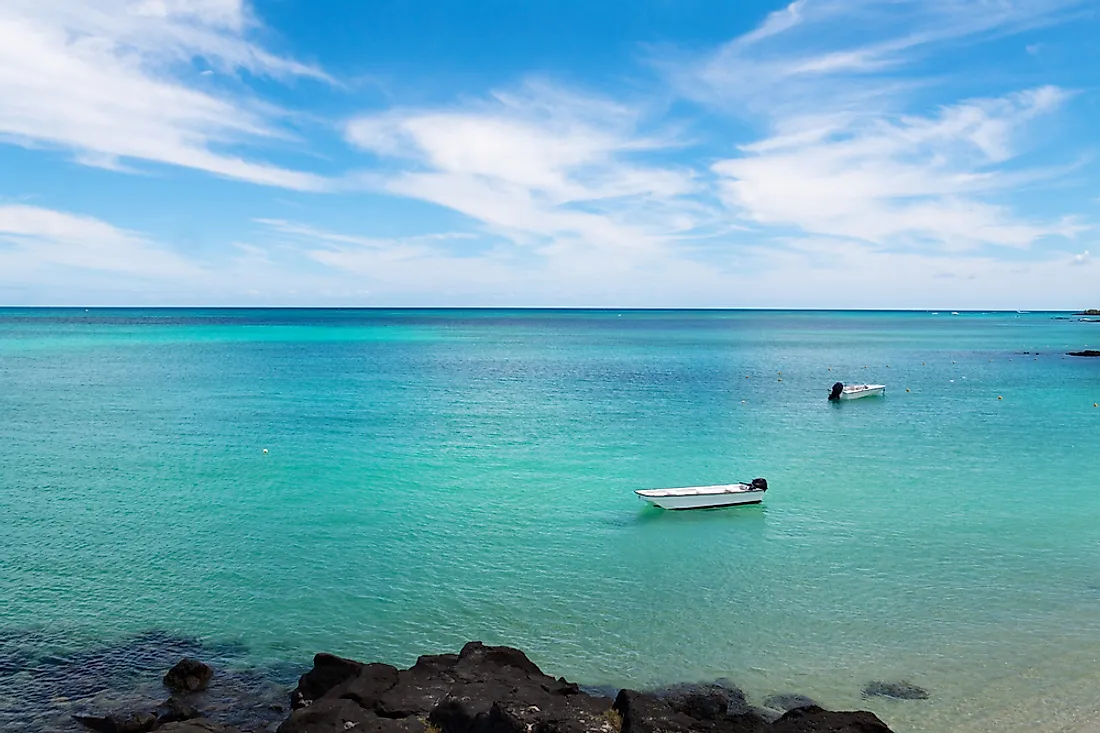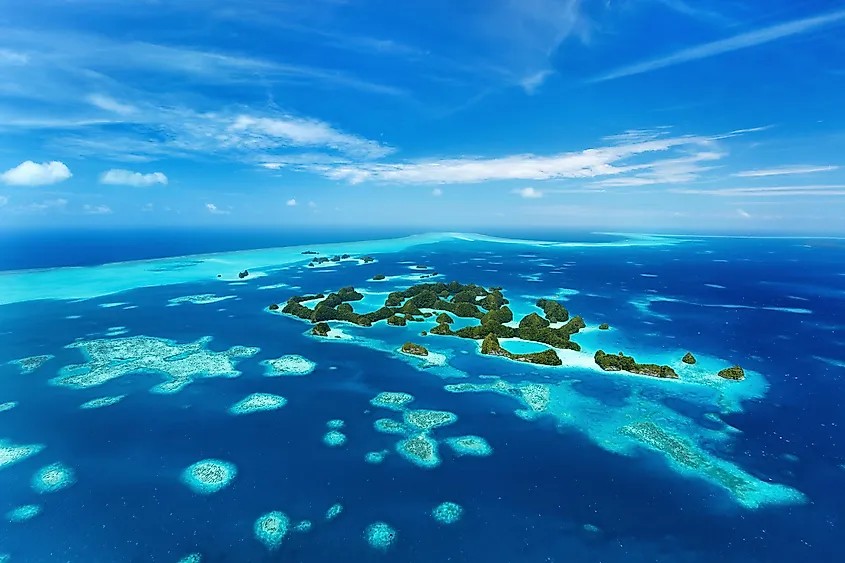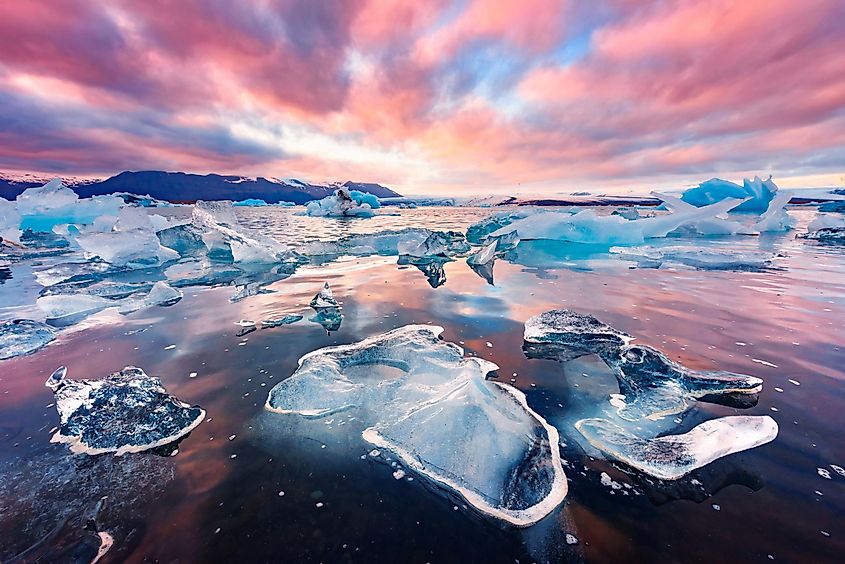where would you find the warmest waters
Which Bounding main Is The Warmest?

- Bounding main h2o temperature is of import to empathise, as it affects global climate and marine ecosystems.
- The Indian Sea is the warmest in the world.
- Bounding main surface temperatures take risen by near one.6°F over the by 100 years, due to global warming.
Considering how large the Earth is, it may be hard to believe that the world's oceans cover an estimated 71% of its surface! These five giant bodies of h2o, consisting of the Pacific, Atlantic, Indian, Southern, and Arctic oceans, hold a whopping 96.5% of the world'due south water. The temperature of these waters is important to rail and empathise, as it affects both the global climate and marine ecosystems.
Measurement of Body of water Surface Temperatures
Ocean surface temperature information is used to create a baseline for comparing with time to come measurements. The results help monitor temperature trends, which biologists, oceanologists, and climate change experts use in their respective fields.
Body of water surface temperature was originally measured through the input port of ships, and with sensors on buoys, but the results were ordinarily inaccurate considering of the ocean's stratification and depth variance. So, temperature measurement techniques evolved to include body of water floats and satellite tools that requite more accurate results. Today, scientists utilise a variety of techniques to measure ocean surface temperature. The layer being measured tin can get to about one,200 feet below the ocean's surface.
Sea Temperatures
Here are the oceans in order of their temperature:
one. Indian Ocean
This ocean is bordered by Asia, Africa, and Australia and is the warmest in the world. Water temperatures of the Indian Ocean range between 66 and 82 degrees Fahrenheit (nineteen to 30 Celsius) on the ocean's upper layer. Since it does not connect to the Chill Ocean, the coldest ocean on World, the Indian Sea stays pretty warm all twelvemonth round. The warm waters assist foster marine life and, because of this, commercial fishing expeditions are popular.
- Size: near 27,240,000 square miles, including the Farsi Gulf and the Red Body of water.
- Depth: about 12,274 anxiety deep, on average. Its deepest point is 24,442 feet.
- Book: about 63,000,000 cubic miles, which is almost nineteen.viii% of the Earth's ocean volume.

Palau Islands, Pacific Ocean. Epitome credit: BlueOrange Studio/Shutterstock
2. Pacific Ocean
The Pacific Ocean hosts many marine animals and provided lx% of the world'southward fish in 1996. Equally the 2nd warmest ocean, much of its surface temperatures is nearly seventy to 80 degrees Fahrenheit (21 to 27 Celsius), but near the North and South Poles, this goes down to about 28 Fahrenheit (-2 Celsius).
- Size: information technology occupies about 63,800,000 foursquare miles of the Globe's surface, making it the largest ocean in the world
- Depth: on average, about 14,040 feet. Its deepest point is the Mariana Trench at 36,201 anxiety, which is the greatest depth found on Earth.
- Volume: about 171,000,000 cubic miles, or over 30% of the Earth's surface.
three. Atlantic Ocean
The Atlantic Ocean takes up virtually 20% of the Earth'southward surface and 29% of the planet's h2o. This ocean's libation temperatures compared to the Pacific are due to more than contact with Arctic waters, and less water volume at the Equator. This ocean'south surface temperatures range from almost 28 degrees Fahrenheit to in a higher place 84 (-2 to 29).
- Size: about 41,100,000 square miles.
- Depth: well-nigh x,925 feet deep, on average. The deepest point is 27,840 anxiety, at the Puerto Rico Trench.
- Volume: 74,471,500 cubic miles.
4. Southern Ocean
The Antarctic ocean's Antarctic waters are extremely cold, while its sub-Antarctic waters are slightly warmer. It has surface temperatures ranging from 28 to 50 degrees Fahrenheit (-2 to 10 degrees Celsius).
- Size: about 7,849,000 foursquare miles.
- Depth: between thirteen,000 and 16,000 feet. The deepest betoken is the South Sandwich Trench at 23,740 feet.
- Volume: 17,225,736 cubic miles.

The Arctic Ocean. Image credit: Smit/Shutterstock
5. Chill Ocean
The Arctic Ocean is the coldest ocean, with boilerplate temperatures of almost 28°F, but with global warming the chill is heating twice as fast every bit the rest of the earth. This trunk of water is also the smallest of the world'southward oceans.
- Size: about 5,427,000 square miles.
- Depth: 3,406 feet on average. Its greatest depth is eighteen,210 anxiety at the Molloy Pigsty in the Farm Strait.
- Volume: 4,498,364 cubic miles.
Impacts of Global Warming on Oceans
Some of the recorded effects of global warming include changes in body of water surface temperatures and sea-level changes. Sea surface temperatures have risen by about ane.half dozen°F over the past 100 years, according to National Oceanic and Atmospheric Administration.
This ascent of the ocean temperatures will pb to changes to climate patterns around the earth, with potentially devastating consequences to ecosystems underwater and out of it. With each passing year, this miracle worsens, and the trend gets harder to opposite.
Source: https://www.worldatlas.com/articles/which-ocean-is-the-warmest.html
Posted by: templescome1961.blogspot.com

0 Response to "where would you find the warmest waters"
Post a Comment